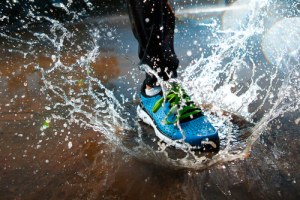 Tinea pedis, otherwise known as athlete’s foot, is extremely common. Studies indicate that as many as 70% of the population deal with this problem, at least once in their lifetime. You don’t have to be an athlete to get tinea pedis. It doesn’t discriminate. It can (and does) happen to anyone.
Tinea pedis, otherwise known as athlete’s foot, is extremely common. Studies indicate that as many as 70% of the population deal with this problem, at least once in their lifetime. You don’t have to be an athlete to get tinea pedis. It doesn’t discriminate. It can (and does) happen to anyone.
Thousands of people seek treatment for it, every day. Do you think you might be suffering from this unsightly condition? If so, you’ll find the following information helpful.
What is Athlete’s Foot
Several types of fungi are to blame for tinea pedis. Additionally, there are cases where fungal infection is not the cause. When this happens, a series of tests are necessary to find an answer.
This skin condition typically affects the area between the toes and the sole of the foot. Some people are more prone to it than others. The exact reason for this, however, is not known. If left untreated, the problem only gets worse. It never gets better on its own.
One of the most common ways to get athlete’s foot is by going barefoot in a public shower, locker room or pool area, where another individual with the condition has walked before you. To avoid this, wear flip-flops or beach shoes, as a means of protecting your feet.
Do You Have It
Signs and symptoms of tinea pedis include:
- Scaly or itchy skin
- Small sores that ooze
- Redness
Not only do these symptoms occur on your feet, they sometimes involve your ankles. The most important part of treating athlete’s foot is keeping your feet as clean and dry as possible. This helps to keep the fungus from spreading.
Wear wool socks, if possible. Wool wicks moisture away from skin. Fungi thrives in moist places. If your feet aren’t damp, fungus simply won’t grow.
There are several ways to treat the skin condition. They include but are not limited to:
- Medicated powders
- White vinegar soaks
- Anti-fungal prescriptions (for severe cases)
Choosing the right method of treatment is up to you. If home remedies aren’t working, it’s best to consult your physician or dermatologist.
This is a brief overview of tinea pedis. If you have it, don’t panic. As you can see, it’s fairly easy to treat. Unfortunately, you can get athlete’s foot more than once.
The most important thing to remember is this. Once you successfully eliminate athlete’s foot, you need to take the precautions, mentioned above, so you won’t get this fungal infection again.
Click here if you think you may have athlete’s foot.


